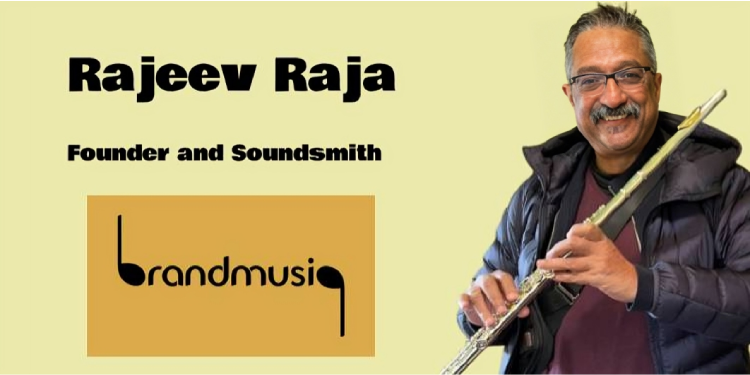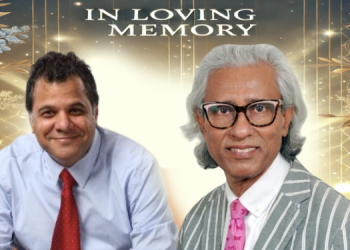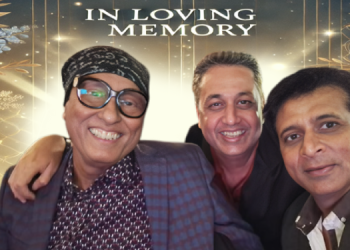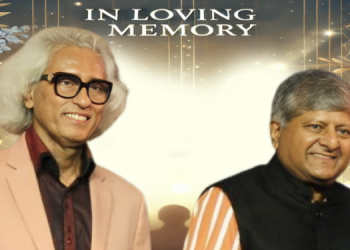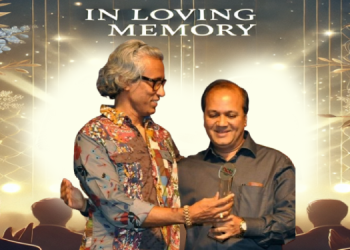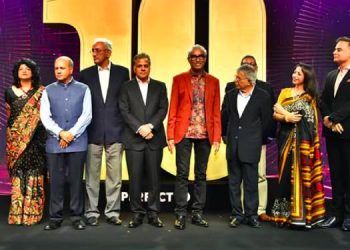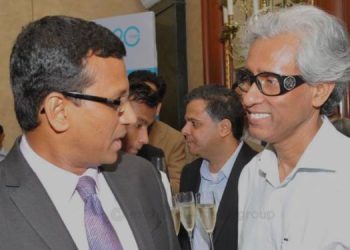Founded by Rajeev Raja with Ajit Varma as CEO and Co-founder, BrandMusiq expresses a brand’s essence by applying the science of sound and the art of music. It has created the term MOGO® – a distillation of a brand’s sonic identity which is the shortest distance between a brand and a consumer’s heart. It is the sonic essence of a brand in musical terms and evokes its core values, emotions and persona.
By applying their time-tested process, the company said that it has developed sonic identities that connect with consumers at a deeper, more subliminal level. BrandMusiq has created and managed sonic identities for several Global and Indian brands including MasterCard Global, HDFC Bank, Red Label, Bru, Vistara Airlines, Zomato, Vivo, Raymond, Nestle, Blue Band, Toyota, Reliance Freshpik and many other brands
Medianews4u.com caught up with Rajeev Raja, Founder and Soundsmith at BrandMusiq.
Q. Are Indian brands beginning to understand the importance of sonic branding?
Yes, Indian brands are increasingly realising the value of establishing a distinct sonic identity. In a landscape where brands communicate through numerous channels and voices, having a signature sound helps unify these efforts. A cohesive sonic identity not only strengthens brand recognition but also cuts through the noise of visual communication, offering a more impactful way to engage audiences.
Q. Besides the visual logo, how important is an audio logo?
An audio logo or what we call MOGO[RR1] â ( or a Musical Logo) is extremely important, especially in today’s digital age. With increasing visual clutter and declining attention spans, consumers are often overwhelmed by visual stimuli. Sound offers a powerful way to cut through this noise and make a memorable impact.
As brands map their consumer journey, audio can be strategically crafted to subtly reinforce brand values at various ‘earpoints’ or audio touchpoints. These include product integration, call IVRs, retail spaces, music streaming platforms, and the growing presence of smart, audio-first devices like smart speakers. A well-designed MOGO[RR2] â not only enhances brand recognition but also creates a more immersive, multi-sensory experience for consumers.

Q. Do some brands still mistakenly think that a sonic identity is like a jingle in a TVC?
Many brands still equate a sonic identity with a simple jingle for TV commercials. There is a significant need for education about the broader potential of sonic branding. While jingles were effective in the era of mass media—primarily on TV and radio—the landscape has shifted. The dominance of the 60-second commercial is fading, and the focus is now on creating shorter, more versatile content across various digital platforms. A true sonic identity goes beyond a single piece of communication or content; it’s about creating a cohesive, recognisable sound that aligns with and unifies the brand across multiple touchpoints, both online and offline.
Q. Could you shed light on work done with brands like Mastercard, Raymond?
Both these brands are very interesting.
Both Mastercard and Raymond presented unique and fascinating opportunities.
For Mastercard, our task was to create a[RR3] global sonic identity that transcended cultures, regions, and socio-economic backgrounds. The melody needed to be relatable and hummable by diverse audiences. At the same time the rhythm and arrangement had to reflect the magic and excitement that the brand wanted to evoke amongst[RR4] its consumers.
To reinforce the sound globally, we developed regional adaptations of the original melody for key markets like Latin America, the Middle East, India and Greater China. These regional versions helped enhance local-level communications even [RR5] while maintaining a cohesive global sound. We also created templates for various moods and occasions, ensuring that[RR6] the melody could adapt while retaining its core essence. This approach allowed the brand to maintain sonic consistency across different contexts, regardless of where or how it was used.[RR7] [RR8] [RR9]
Raymond, on the other hand, was a different kind of project. Known for appropriating a western classical piece by Schumann as their sonic identity, the challenge was to modernize the melody while staying true to the brand’s evolving identity. Raymond sought to shift from the traditional “perfect gentleman” image to a more contemporary and modern brand. We refreshed the Schumann melody to create a sonic identity system that included a full sonic palette – a MOGOSCAPE , a MOGO (Musical logo) and a mini-MOGO. This was done about eight years ago, and since then, the brand’s content has featured a unique expression of this sonic identity, tailored to new collections or launches. By establishing a strategic sonic framework, we enabled the brand to consistently communicate its evolving identity through sound.
Q. Is Netflix’s ‘Tudum’ a brilliant example of sonic branding? Doesn’t it instantly differentiate the brand and set it apart from other OTT platforms?
Absolutely! Netflix’s “Tudum” is a good example. One of the key factors in its success is the sheer frequency with which it’s heard. Imagine the millions of users who engage with the platform daily, hearing that sound each time they open the app. This repeated exposure helps build strong recognition and recall. But one must add that it stops at ‘recognition’ and brand ‘reinforcement’, but doesn’t evoke an emotional reaction which a comprehensive MOGO[RR10] â should.
Q. How much effort goes into creating a sonic brand identity? How does the process work?
Creating a sonic brand identity is a thoughtful and strategic process that requires aligning sound with the brand’s personality, values, and emotions. It’s not just about the effort; it’s about ensuring that the sonic identity becomes an integral extension of the brand’s overall identity, using the power of sound to connect with audiences on a deeper, more sensory level.
At BrandMusiq, we recognized early on that this process needed a clear strategic framework. To make this manageable and effective, we developed a three-stage process called MUSE (Musical Strategy Exercise), which guides the creation and evaluation of the sonic identity through the lens of the brand.
1. Brand Discovery: In this first phase, we dive deep into understanding the brand as if it were a person. We explore its personality, values, and emotional tone to get a clear sense of what the brand represents. This forms the foundation for the sound.
2. Sonic Moodboard: In the second stage, we create sonic moodboards that align with the brand characteristics identified in [RR11] the brand discovery phase. This is where we experiment with different sounds and gather feedback to identify the right sonic “zone” that resonates with the brand. The goal here is to refine the direction of the sound.
3. Final Sonic Identity Creation: Once we’ve arrived at the right zone of sound, we move to the third and final phase—creating the brand’s sonic identity. This includes the main sonic theme, variations for different touchpoints, and guidelines for consistent use across platforms.
This collaborative approach ensures that the sonic identity truly reflects the brand’s core attributes.

Q. What role is AI playing for companies to create a strong sonic identity?
AI has significant potential in the realm of sonic branding, but it’s still in the early stages when it comes to matching the creativity that human musicians bring to the process. While AI can assist in generating sounds and patterns based on data, the emotional depth and brand-specific resonance still require human expertise.
However, we’re actively exploring this space by building our own AI platform, leveraging our extensive sonic library for machine learning. This allows us to experiment with AI-driven solutions while ensuring the output is aligned with the brand’s personality and identity. Though it will take time for AI to achieve the same level of sophistication as human composers, its role in speeding up production, refining iterations, and generating sonic options will only grow stronger.

Q. What role does sonic branding play in conveying a brand’s sense of identity and purpose?
Sound can tap into human emotions in ways that visuals often cannot. We believe that a MOGO[RR12] â (musical logo) is one of the quickest ways to connect with a consumer’s heart. Humans respond to sound at a deep, subconscious level—often, a brand’s sound or melody gets embedded in their memory, and hearing it again can evoke emotions, expressions, or even imagery of the brand world.
Music, in particular, resonates universally across cultures, enabling brands to forge deeper connections with audiences. By having a well-crafted sonic identity, brands can more effectively convey their purpose and evoke strong feelings in consumers’ minds and hearts, often more powerfully than through visual communication alone.
Q. Could you talk about recent research done that highlights the critical role of instrumental timbre?
Our research examined the vital role that an instrument’s timbre or tone plays in shaping our perception of a brand’s personality. We focused on two key aspects:
a) how the timbre of an instrument, such as a flute, can convey sophistication and elegance, while a piano’s timbre may express competence and reliability; and
b) how varying tempos or the pace of the music influences our interpretation of a brand’s persona, with faster tempos often evoking energy and excitement, while slower tempos can convey calmness and trust. This nuanced understanding of sound can help brands craft a more resonant and cohesive sonic identity.
Q. Once a sonic identity is created, can it evolve over time?
Yes, just like visual identity, a sonic identity may evolve with changing consumer expectations and market dynamics. The key is to ensure that, even when evolving, the sound remains true to the brand’s core melodic and emotional expressions.
For example, when we worked on Raymond’s sonic identity, the goal was to modernise their classic Schumann-inspired melody. While the original sound was iconic, it needed to evolve to reflect Raymond’s shift toward a more contemporary image. We were able to refresh the sound while still staying true to the brand’s heritage, demonstrating that sonic identities can evolve gracefully rather than needing to be entirely replaced.

Q. Could you shed light on the relationship between traditional melodic scales like ragas, and their effect on consumer emotions and brand perception?
The choice of music can have a significant impact on the effectiveness of a sonic identity. One of the key elements in music that plays a crucial role in creating emotions are musical scales. Different scales have different emotional connotations, and therefore, the choice of musical scales or ragas can have a significant impact on the emotional response of the listener.
The emotional response of the target audience plays a crucial role in the creating a deeper connection. By choosing the right musical scale, brands can create a positive emotional response in the target audience, which can lead to better brand recall and increased sales.

